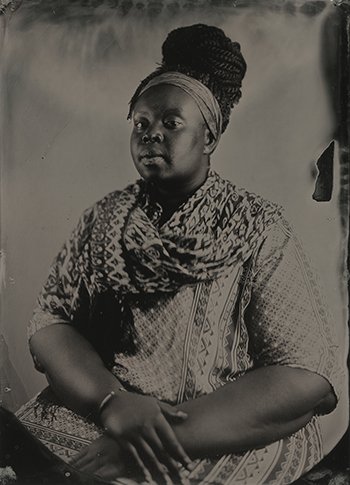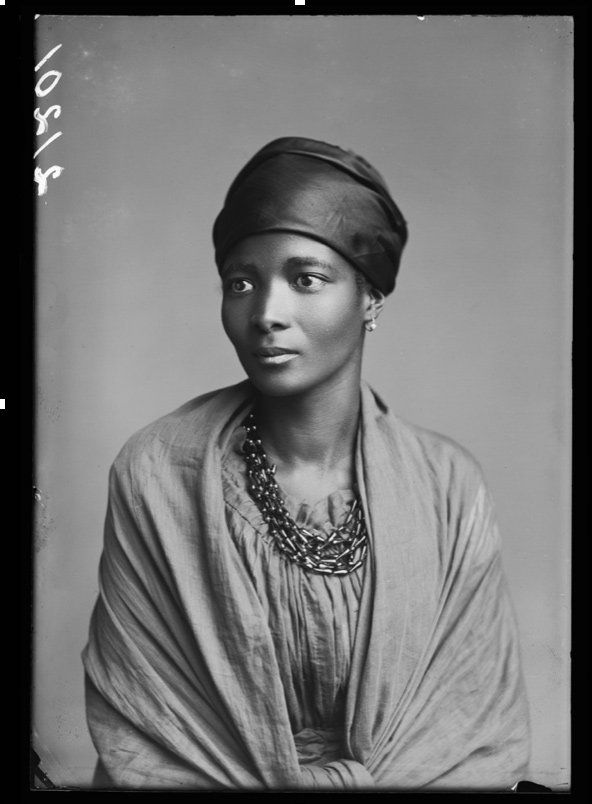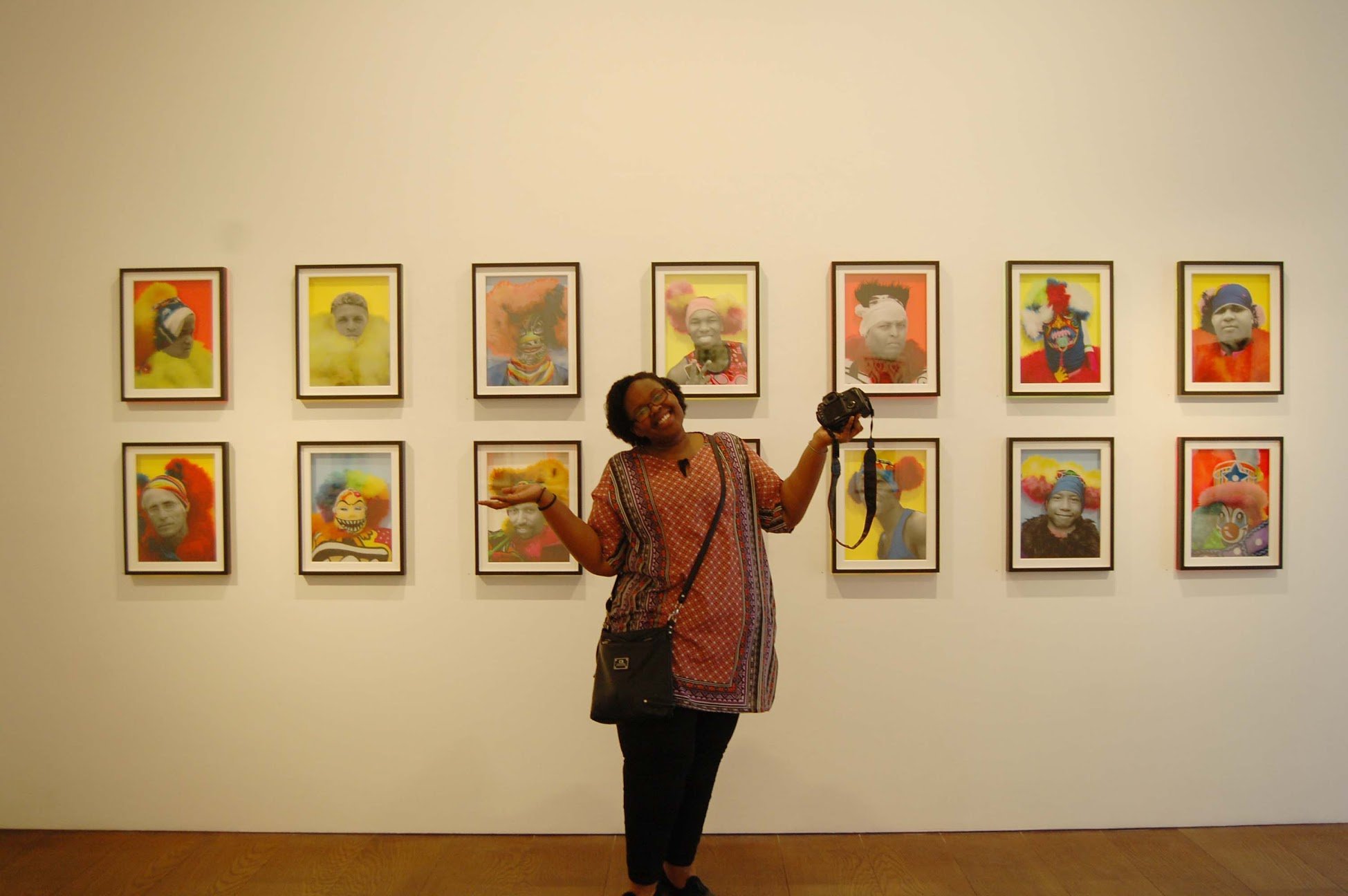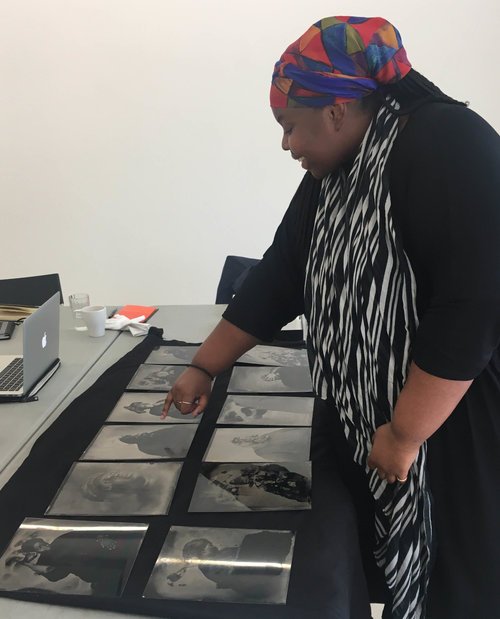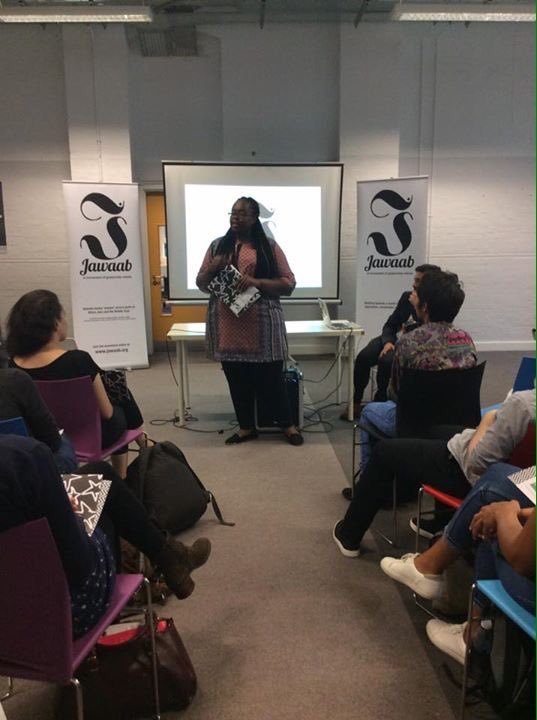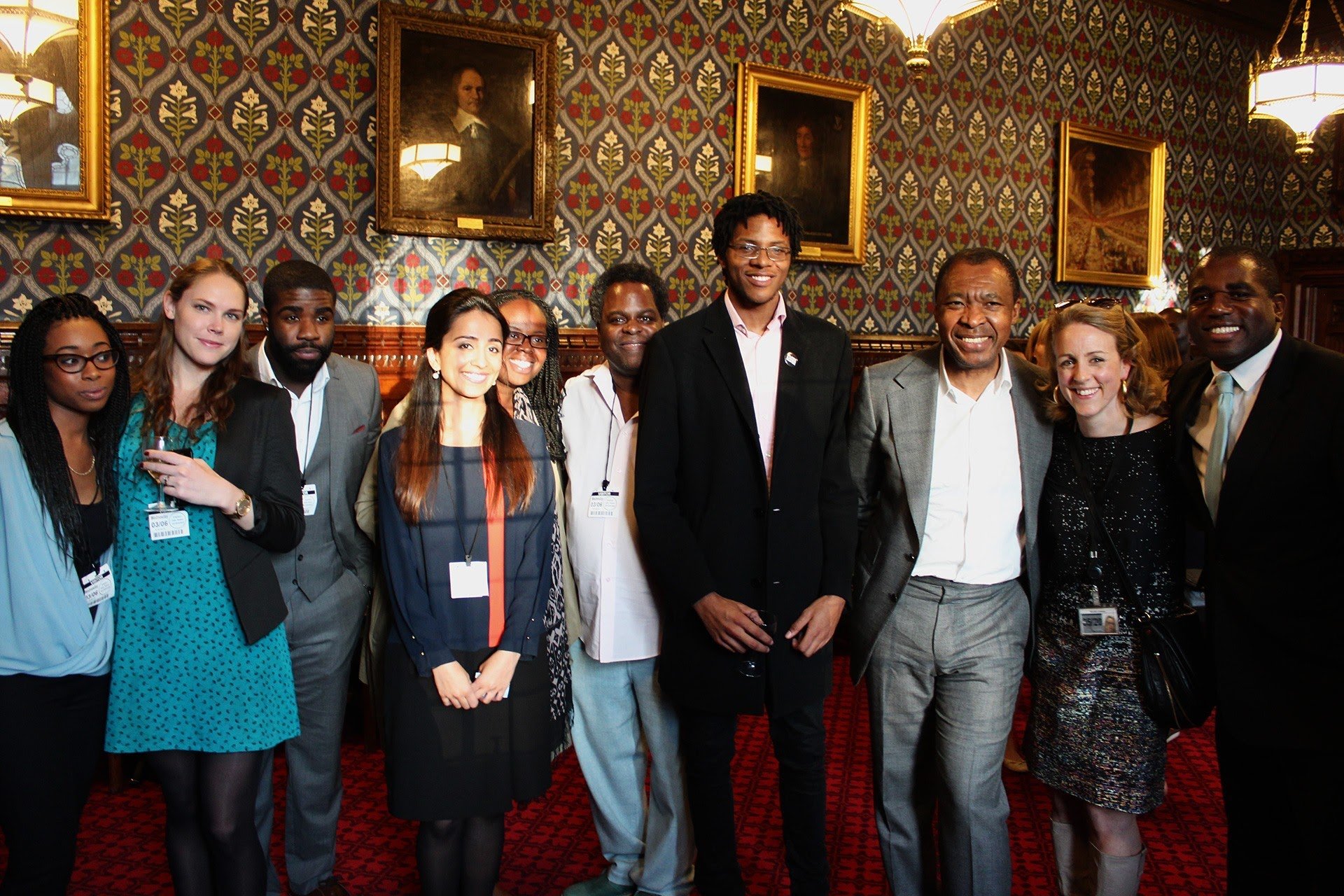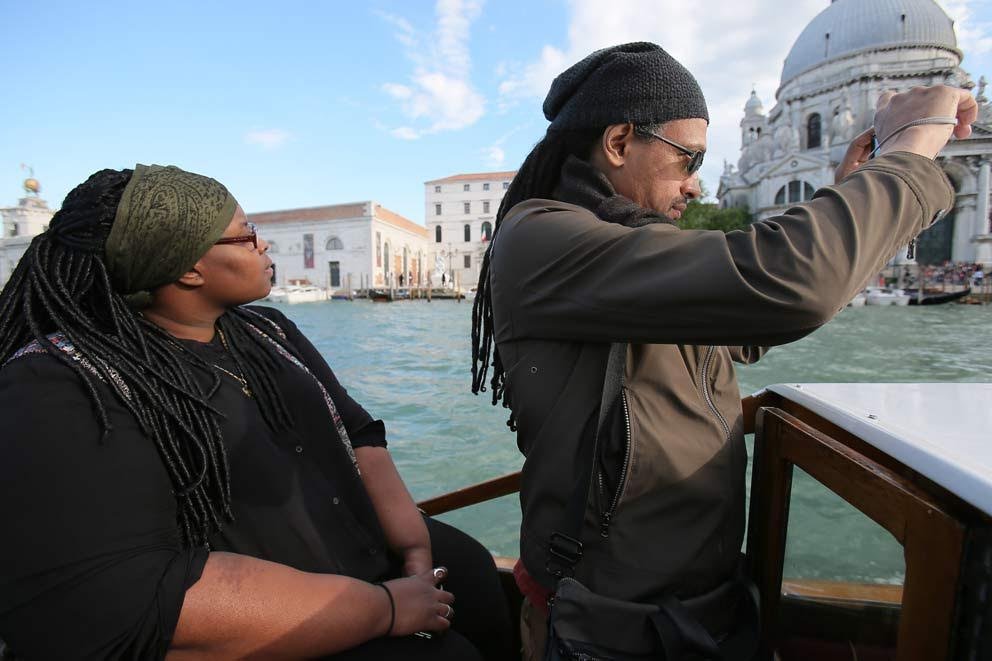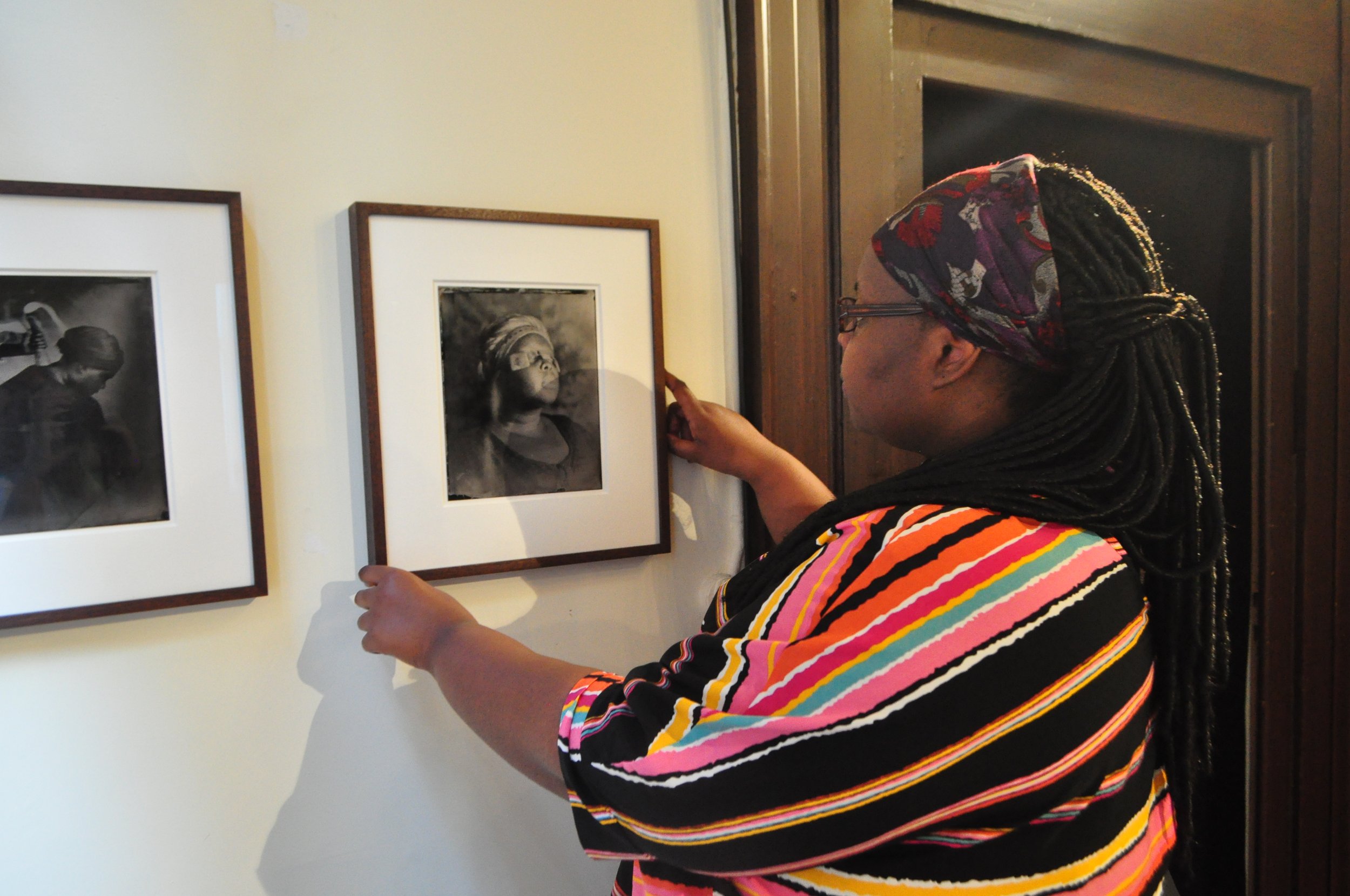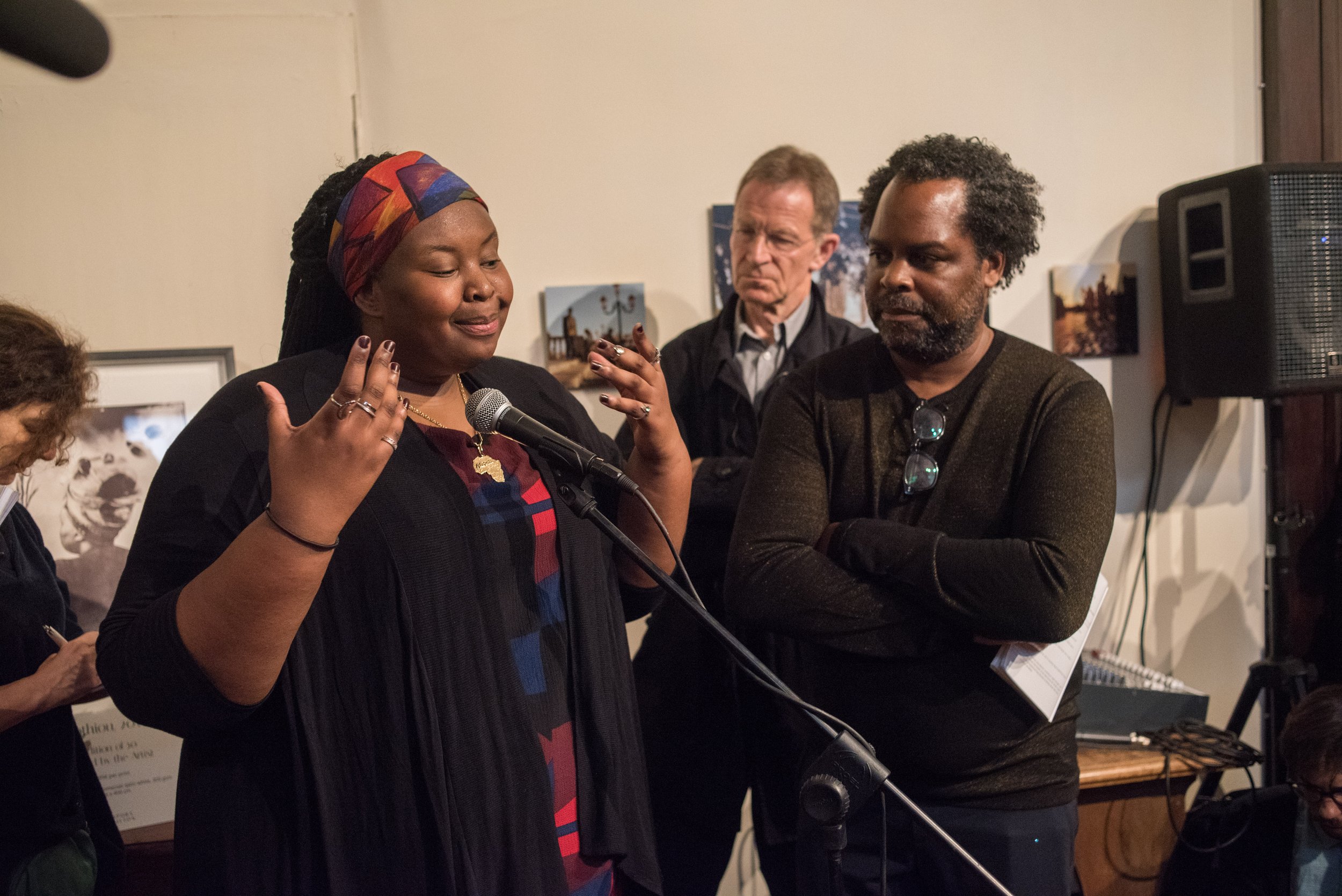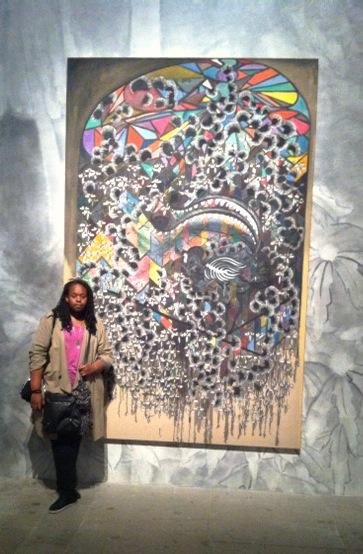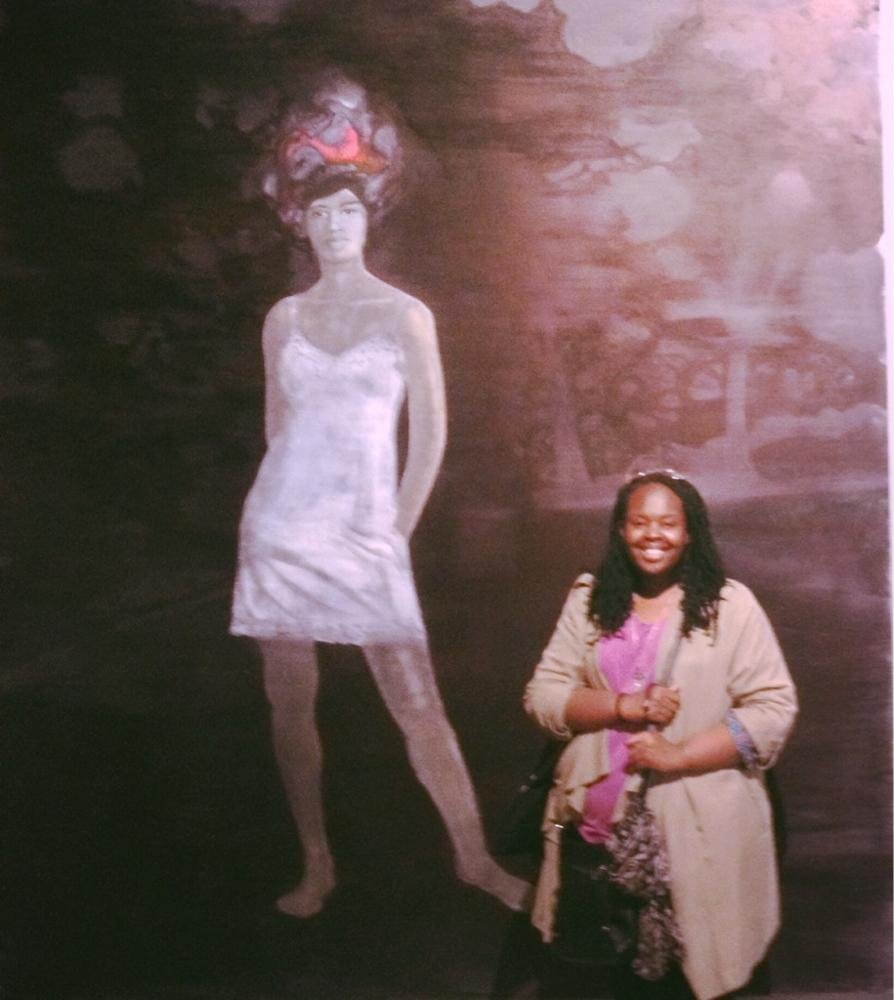Early Life
Khadija Saye, also known as Ya-Haddy Sisi Saye, was a Gambian-British artist, activist and carer. Saye was born in London in 1992, and raised in Ladbroke Grove. She grew up in a dual faith household, attending Church with her Christian mother and Mosque with her Muslim father, her relationship with spirituality and her Gambian heritage would go on to profoundly shape her artistic practice.
From the age of seven, Saye received support with her learning, at IntoUniversity. The charity encouraged her ambitions and nurtured her artistic talent through the Carnival Arts Programme. Saye was immensely grateful for her experiences. Throughout her life she was vehement about educational inequality, focused on opening doors for others, and working towards a future in which a child’s background would not fix their destiny.
Saye excelled at school and was awarded an Arnold Foundation Scholarship for sixth form at the prestigious Rugby public school. Saye credited the support of her teachers at Rugby in giving her the confidence to pursue photography. Her photography teacher, Amy Farrelly, stated Khadija was a humble and unassuming spirit who was making a difference in her own community…She was incredibly empathetic to others and she was one of my most talented students in her year.
University and Training
Saye went on to study photography at University for the Creative Arts, Farnham. One of her tutors, Kathy Kubicki wrote:
Khadija had a deep interest in postcolonial theory and identity politics at university. She was inspired by Stuart Hall and Kobena Mercer, and later informed by Black History Studies. She quickly established a framework to support and influence her work, while simultaneously exploring the history of portraiture and photographic techniques, alongside deeply personal biographical issues. She admired the work of Kara Walker, Lorna Simpson, Christina de Middel and Chris Ofili.
Her graduation piece in 2013, Crowned was a series of photographs of friends, family and neighbours, celebrating the identity and power of black women through images of their hair. She photographed Crowned in her home on the 20th floor of Grenfell Tower with, in her own words, “£0, just some black velvet with beautiful friends & family”.
Crowned was selected by artist Nicola Green to be displayed at the 2014 Discerning Eye exhibition. Green remembers She stood with her mother Mary next to her art work brimming with enthusiasm.
In 2016, Saye attended an Artist-Led workshop on 19th Century Collodion tintypes at Autograph, as part of The Missing Chapter - Black Chronicles curatorial archive research programme. Saye learnt about the process from artist’s Riccardo Cavallari and Jacopo Emiliani using an original L.F. Deardoff and Sons Inc. wooden plate camera. She had the opportunity to take on the role of both photographer and the sitter and learnt the how to varnish images to avoid deterioration. Saye cared deeply about archives, preservation and visual legacies, and expressed a keen interest in the 19th century portraits of The African Choir from the Hulton Getty archives. In 2017, Saye used the same technique to create Dwelling: in this space we breathe, with help from artist Almudena Romero.
Career
Saye was exceptionally hard working and determined to establish a career in the arts.
Following the Discerning Eye exhibition, Saye worked as a studio assistant for Nicola Green. Saye worked closely with Green on her series of work The Dance of Colour. The two formed a firm friendship, and Green wrote: I found her unusual in her gracious, kind and determined beauty, which is reflected so powerfully in her work.
She gained a Creative Access Internship and began working at PEER as an Exhibition Assistant in July 2015. As well as working on exhibitions and fundraising, Saye was very engaged with the planning and planting of a community garden outside PEER which has been renamed Khadija’s Garden in her honour. PEER stated We are honoured to have had the opportunity to learn from the beauty of Khadija's spirit and the warmth of her heart.
In August 2016, Saye joined The London Transport Museum as a Young Freelancer. The Museum wrote: Khadija was all about people: whether assisting frantic set-up for a workshop, or guiding a participant on a course, caring for the elderly, or talking to a colleague struggling with work, Khadija was never short of time to listen. On meeting Khadija for the first time, her kindness shone through.
In both her life and work Saye was politically engaged and she dedicated herself to issues of social justice. Saye volunteered at Jawaab to educate and empower young Muslims, working on a short film about educational inequality, and delivering photography training to young students. Saye’s work Eid was a series of photographs in vibrant colours reflecting on her Muslim heritage and culture.
Saye supported her artistic ambitions working as a carer. In June 2019 Saye, and her mother Mary Mendy, were posthumously awarded the Adeplayhoue’s annual carer award for their dedication to help vulnerable people in the borough of Hammersmith and Fulham.
Saye described her artistic practice as exploring subjects of African diaspora, intersectional feminism and cultural hybridity, she aimed to celebrate and showcase the multifaceted Black experience from a female perspective.
The Diaspora Pavilion
In 2015 Saye was sponsored by Peter Clayton and Jackie Russell to take part in a scheme that took four artists to the opening week of the 56th Venice Biennale curated by Okwui Enwezor. Saye took part in talks and networking events and saw the work of some of her favourite artists, including Chris Ofili and Lorna Simpson (who she described on her personal twitter account as her idol).
The success of the trip to Venice planted the seed for the larger mentor scheme, The Diaspora Platform, founded by Nicola Green, Peter Clayton, and International Curators Forum in partnership with University of the Arts London (UAL) and with the support of Arts Council England.
The Diaspora Platform linked emerging artists with mentors, all from racially and culturally diverse backgrounds and whose work engaged with the topic of the diaspora. Saye was chosen as one of twelve emerging artists selected from a nation-wide open call.
The two year project culminated in the Diaspora Pavilion, an exhibition at the 57th Venice Biennale, co-founded by David Bailey, Nicola Green, Peter Clayton and David Lammy. The Diaspora Pavilion was conceived as a challenge to the prevalence of national pavilions within the structure of the Venice Biennale. The twelve emerging artists and eight of the mentors from the Diaspora Platform, including Isaac Julien and Yinka Shoinbare, showcased their work to an international audience.
Saye created a series of wet plate collodion tintypes, entitled Dwelling: in this space we breathe, for the Diaspora Pavilion. The works explored the migration of traditional Gambian spiritual practices, a continuation of the artist’s exploration of her identity, heritage and mixed faith background, which can also be seen in her earlier work Home.Coming.
Dwelling: in this space we breathe received widespread critical acclaim. At Venice, Saye established herself as an emerging talent and was approached by major collectors, artists and institutions who recognised her extraordinary promise for the future. The art critic Waldemar Januszczak described Saye’s work as standing out across the entire Venice Biennale. Saye’s idol, Lorna Simpson, saw Dwelling: in this space we breath at the Diaspora Pavilion. She admired her work and recognised her potential, inviting Saye to spend time at her studio in New York. Saye also met with Andrew Nairne, the director of Kettle’s Yard and accepted an invitation to be part of the Kettle’s Yard reopening show titled Actions. The image of the World can be Different.
On the 10th May 2017 Saye tweeted It's been a real journey, but mama, I'm an artist exhibiting in Venice and the blessings are abundant!
In the BBC Documentary Venice Biennale: Britain’s New Voices Saye was asked “Years down the line, what will Khadija “the professional photographer” be doing?” to which she responded:
I’d like to say the same thing! Whether it’s now, or in ten years down the line, I want to make sure that I’m staying true to myself. And this idea of opening doors, how previous artists of colour have opened the doors, I’d like to think that I have the potential to do the same. Going to an art gallery or going to a museum, it’s not really a diverse crowd, it’s very much you can count the amount of people that are black, or people of colour, in the room. This step of being in Venice is a way of crossing that bridge - if I can do it then all my friends can do it! As they say, if you don’t see yourself represented then you don’t think you can do it. It’s the idea of opening the door for others for the next generation.
Death
Saye lived and worked at her family home on the 20th floor of Grenfell Tower, and was killed in the Grenfell Tower fire on 14 June 2017, aged just 24.
The BBC filmed a documentary Venice Biennale: Britain’s New Voices featuring Khadija Saye, Abbas Zahedi and Barbara Walker, as they prepared to exhibit their work in the Diaspora Pavilion. The programme was scheduled to be aired on 17 June but after the fire, it was delayed to September. It has now been shown across the world. It is evident in the documentary that Khadija Saye’s career was just beginning.
-
Saye’s work has been acquired by the Government Art Collection, The British Museum, The British Library, The Getty Museum, The Pitt Rivers Museum, and many private collectors.
2023 -2024 The World in Common: Contemporary African Photography, Tate Modern, London
2023 Andichurrai accompanying Chris Ofili’s Requiem, Tate Britain, London
2023 in this space we breathe, The Faith Museum, Bishop Auckland
2023 Sharjah Biennial 15: Thinking Historically in the Present, Sharjah United Arab Emirates
2021-2023 Dwelling: In This Space We Breathe by Khadija Saye, Pitt Rivers Museum, Oxford
2022 The Lindisfarne Gospels, Laing Art Gallery, Newcastle
2022 The Story of Art as it’s Still Being Written, Victoria Miro, London
2021-2022 Masterpieces in Miniature: The 2021 Model Art Gallery, Pallant house, Chichester
2021 Breathing Out, Art in Romney Marsh Visual Arts Festival, St Georges Church, Ivychurch
2020-2021 Unfinished Business: The Fight for Women's Rights, British Library, London
2020-2021 in this space we breathe, British Library, London
2020 Breath is Invisible, Nottinghill, London
2019 Rock My Soul, Victoria Miro, London
2018 Post War and Contemporary Art, Christie's, London
2018 Actions. The image of the world can be different, Kettle's Yard, Cambridge
2017 Memorial, Tate Britain, London
2017 Diaspora Pavilion, Palazzo Pisani S Marina, Venice, Italy
2014 Discerning Eye, Mall Galleries, London
-
Hessel, K. (2022). The Story of Art Without Men London: Hutchinson Heinemann.
Bryan, K. (2021). Bright Stars : Great Artists Who Died Too Young London: Frances Lincoln.
Marr, A. (2020). Elizabethans: A History of How Modern Britain Was Forged. HarperCollins UK.
Parker, R. (2021). A Brief History Of Black British Art. S.L.: Tate Publishing.
Reckitt, H., Gosling, L., Robinson, H., Tobin, A., Balshaw, M. and Xabier Arakistain (2019). The art of feminism : images that shaped the fight for equality. London: Tate Publishing.
-




